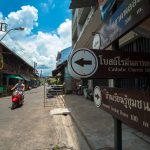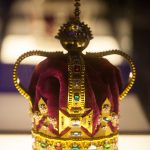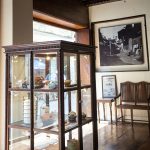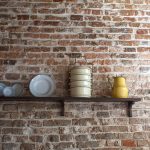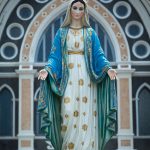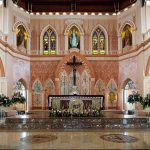The Tourism Authority of Thailand (TAT) is pledging to continue three principles of the late King Bhumibol Adulyadej’s work by supporting his Royal Projects. TAT, together with the United Nations Development Programme (UNDP), are carrying on his legacy via the recently launched ‘The King’s Wisdom for Sustainable Tourism‘ plan.
The goal of this campaign is to preserve the late King’s philosophy by integrating it with local resources to build sustainable tourism foundations that lasts for generations.
Its ethos is to add value to an area or regional tourism product by prudently using revenue earned from every tourist dollar spent. Then it is invested back into human resource development to strengthen the local community, allowing it to enjoy sustained growth and economic independence.
Various case studies in model community tourism development that fulfilled required criteria relating to the late King’s philosophy were selected, including the Chanthaboon Riverside Community hailing from Thailand’s Eastern Region in Chanthaburi province.
Area’s Unique History
Chanthaburi’s unique history changed after the Paknam crisis in 1893, when French colonial troops occupied Chanthaburi before withdrawing in 1905 after Thailand relinquished parts of Western Cambodia. Visitors are often surprised to learn how those 12 years left a mark on the area, during which much of its unique European-influenced architecture was built. It is an important part of its rich, colourful history and the area’s many attractions.
This tourism potential and identity is preserved in wonderful ways, taking the best of the Thai local lifestyle and blending it with its vintage colonial-style architecture.
Flood Prevention Case Study
A geographical reality of the city is that the Chanthaburi River runs through the town centre and it has affected its tourism development. The River often swells or overflows its banks during the annual monsoon season because the western seaboard province receives so much rain.
The late King Bhumibol Adulyadej was aware of this challenge and because of his concern he initiated the ‘Chanthaburi Flood Relief Project’, which in Thai became known as the ‘Kaem Ling’ or ‘Monkey’s Cheek Project’.
This ‘Chanthaburi Flood Relief Project’ is especially historically significant, as it was the last Royal Project the late King Bhumibol Adulyadej bestowed on his people and uniquely benefited the people of the Chanthaboon Riverside Community. The Project took six years to complete from 2009 to 2014 at a cost of over 3.5 billion Baht (US$ 106.5 million). After the construction of its flood prevention canal, Chanthaburi has yet to face another flood crisis.
Exploring the Chantaboon Riverside Community
When roaming the streets of the Chanthaboon Riverside Community, visitors are delighted to find how ‘Instagramable’ the area is, with a wealth of social media friendly settings to choose from. It is nearly impossible not to take pictures.
The well-preserved gingerbread colonial buildings are graced with European-styled verandas that rub shoulders with vibrant Thai and Cambodian influenced homes. This is juxtaposed by the numerous ‘hipster’ coffee shops and art galleries tucked along small old alleys, which snake alongside the Chanthaburi River. These narrow lanes are also home to street vendors selling conical straw hats, a testament to the sizeable Vietnamese community that have settled there since the early 19th century.
Together with the neighbouring province of Trat and the region around Pailin, across the border in Cambodia, Chanthaburi used to be an important source of gemstones, especially rubies and sapphires. And locally mined gems still sparkle in many of the glass cabinets around Chanthaboon’s famous workshops, making it an intriguing place to window shop.
Not to be missed is a traditional house known as ‘Khun Anusornsombat’s House’ or ‘Learning House 69’. Another handsome old building, this wooden shophouse at 69 Sukhaphiban Road, was converted into a learning centre, which also functions as a folk museum and tourist information bureau. Local curators make a special effort to keep this open on weekends when the town receives most of its visitors. It is surrounded by picturesque gardens that provide a colourful backdrop when in bloom, whilst the home is filled with fantastic photography, videos and art illustrating the history of the Chanthaboon Riverside Community and the surrounding area.
Visitors have a hard time missing the towering spires of the Cathedral of the Immaculate Conception, which is the rock of Chanthaboon’s Catholic community, which was founded when the previously mentioned Vietnamese began fleeing religious persecution in their former homeland. All one has to do is walk inside this great gothic building (remembering of course to remove one’s shoes and dress modestly) to admire its elaborate interiors. Even for those not drawn there for any religious reason, it’s quite an architectural achievement and a spectacular sight to behold.
The Future
All tourism stakeholders agree that the Chanthaboon Riverside Community needs to remain vigilant to ensure it preserves its identity and honour the late King Bhumibol Adulyadej’s work, thus preserving the architecture and rich history of this precious little tourism gem. It remains one of the most charming areas of Thailand’ and a model sustainable tourism community that still retains its traditional way of life. This reflects TAT’s efforts to honour the late King Bhumibol Adulyadej’s sustainable tourism philosophy that also promotes Thai local experiences to international travellers.
*More photos in the following galleries
Gallery 1: Chanthaburi Gem and Jewelry Center
Gallery 2: Baan Luang Rajamaitri, the 150-year old Historic Inn where the legend of Luang Rajamaitri, the benefactor of Chantabun community, has been collected.
Gallery 3: The Cathedral of the Immaculate Conception





